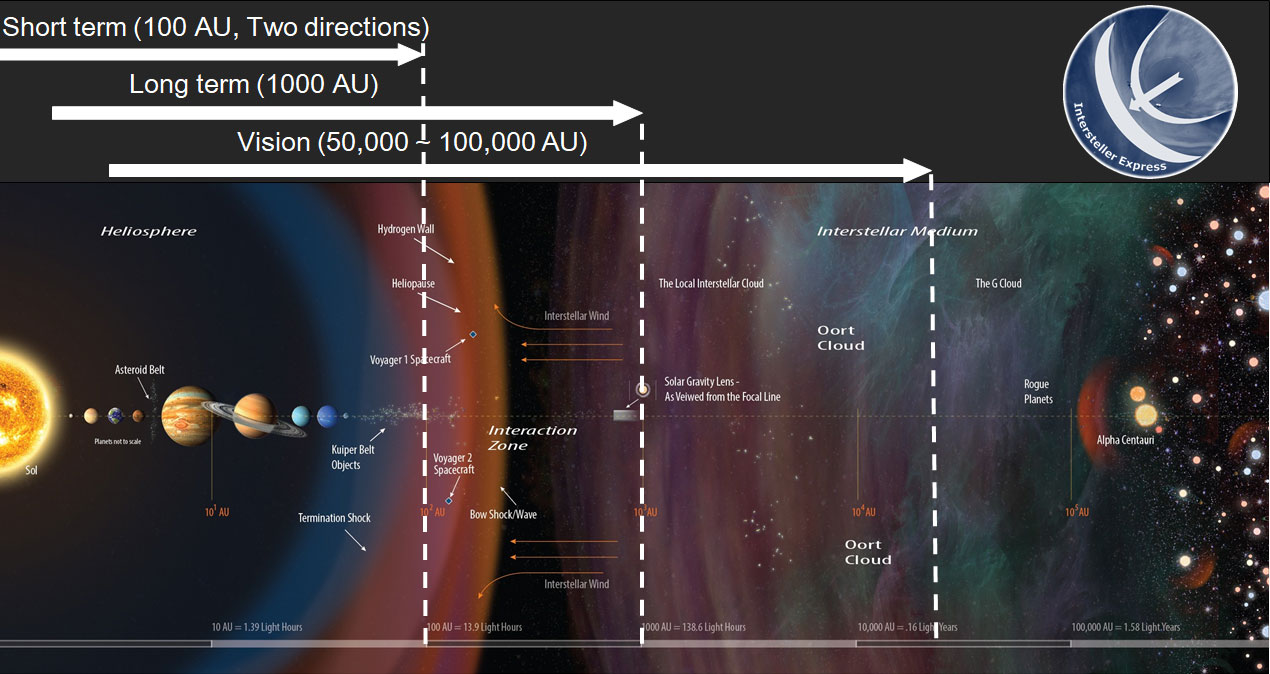Exploration of Outer Heliosphere and Nearby Interstellar Medium

Picture Credit: Charles Carter/Keck Institute for Space Studies
OVERVIEW
Context
The outer heliosphere and its interaction with surrounding interstellar space is still an uncharted territory in heliophysics. Although in-situ observations from Voyagers and remote observations from IBEX and Cassini are providing significant new information about the heliospheric boundary region, a specially designed interstellar probe with modern instruments and measurement requirements better defined by these recent observations can provide the new information to the scientific questions, likely, 1) What is the nature of the nearby interstellar medium? 2) How does solar wind evolve and interact with the interstellar medium? 3) What is the structure and dynamics of heliosphere? 4) How did matter in the solar system and interstellar medium originate and evolve?
NASA and ESA have done many pre-studies on a specially designed interstellar mission. Since 2014, China started to carry out some concept studies on similar mission, such as the Strategic Priority Research Program of Chinese Academy of Sciences. Recently, a Xiangshan scientific conference was held in Beijing to discuss the feasibility of launching two interstellar probes with opposite directions by China. One probe is expected to fly towards the heliospheric “nose” region and the other one is towards the heliotail.
The aims of this ISSI-BJ forum are related to understand the global nature of our local galactic environment, which is significantly more complex than previously thought. During this forum the participants, we will discuss:
the most valuable scientific objectives for two different directions
how to maximize scientific outputs during the journey to the heliospheric boundary
payload suggestions and specifications
Objectives
Fundamental questions in contemporary space science related to outer heliosphere and nearby interstellar medium
Scientific objectives of an interstellar mission with two exploring directions
The overall payload suggestions and specifications
International Collaborations
Date: 7-8 November 2019
CONVENERS
| Wang Chi | NSSC, CAS, China |
| Ralph L. McNutt Jr. | Johns Hopkins University, USA |
| Rober F. Wimmer-Schweingruber | University of Kiel, Germany |
| John D. Richardson | Massachusetts Insitute of Technology, USA |
| Li Hui | NSSC, CAS, China |
| Maurizio Falanga | ISSI-BJ, China |